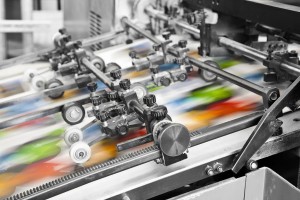
Make sure your digital files are print ready before you bring them to your commercial printer.
Printing lingo can be tough to understand, especially if you’re unfamiliar with the industry. Printed file preparation, however, is still widely used in the digitized world today for wide-range of necessary communication mediums. Learning about the printing industry reduces unnecessary hassles associated with file preparation. You’ll need to make sure your digital documents are print ready before bringing them to a trusted printing company. Print ready means your file has all the specifications necessary to produce high-resolution material, without requiring additional tweaking, alterations, or professional interventions. We’ll take the time to show you how to make your documents print ready this week. We know your time is precious to you. We’ll keep you on schedule and ensure your printing job is completed conveniently, quickly, and efficiently.
How Do I Know My File Isn’t Print Ready?
There are a couple of key indicators that a file is print ready. The process of elimination is a useful learning strategy. We’ll show you incorrect file preparation, first, so you can expertly add the necessary alterations to ensure printing ease. An inappropriately sized document affects the resolution of printed material. Additionally, colors set to RGB instead of CMYK prevent a layout file from being print ready. RGB is an additive, projective light color system. All printed colors start off dark. Lighter, highlights are added to produce visible colors. CMYK is a subjective light color system. What this means is, unlike RGB, all colors start on white paper and colored inks are added to absorb reflected white light. RGB is usually used for coloring screens (computer, mobile phone, television etc.) whereas, CMYK is most effectively used for printed platforms. Your printed materials resolution will be affected if your colors are set to RGB. Resolution should be set at a minimum of 300 dots per inch at 100% size. Not only are proper color settings and file size necessary for print readiness, but so are file margins, contrast between text and image, and adequately proof read text. Your file’s information should closer than ¼” from any trimmed edges. There should also be ample contrast between your text and background images. If you’re having trouble reading text on a digitized file, you likely won’t be able to read it’s printed equivalent. The last thing you need to check is that all spelling and grammatical errors are appropriately fixed. Don’t spend money and time printing a file with blaring spelling and grammar problems! Proofreading is extremely important to a file’s print readiness.
Pay Attention To File Types
Commercial printers can usually handle printing a wide range of different file types, however, we’ll provide you with file types we’re sure are compatible with our printers. High resolution PDF files- including those created with Adobe InDesign, Illustrator or PhotoShop- are widely accepted. Most files created with Microsoft products, however, require some serious tweaking in order to make them print ready. Files produced with Word, Publisher or Powerpoint, require conversion. It’s best to check with your commercial printer about acceptable files before bringing all your files in.
Time Printers Inc. Answers All Your File Preparation Questions!
Time Printers is a full-service printing products and services business located in Baltimore, Maryland. Our graphics team of experienced professionals can help you bring your vision to life in a timely and affordable manner. Our unique portfolio speaks for us and our quality services.
To learn more about our professionally done printing and design services, please give Time Printers a call at 410.566.3005. At Time Printers, we believe it is our job to make you look good! Quality products will help you land that dream job!
You can also follow us on Facebook, Twitter, Google+, Pinterest, and LinkedIn for weekly tips, information, and news on printing!
Tags: digital printing, offset printing, Professional Printing
